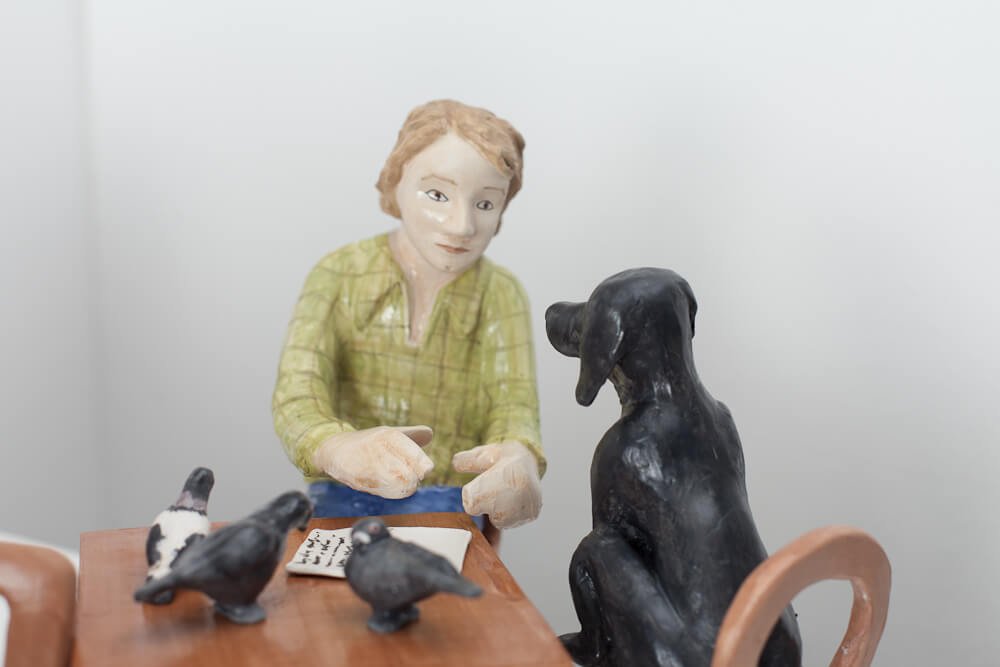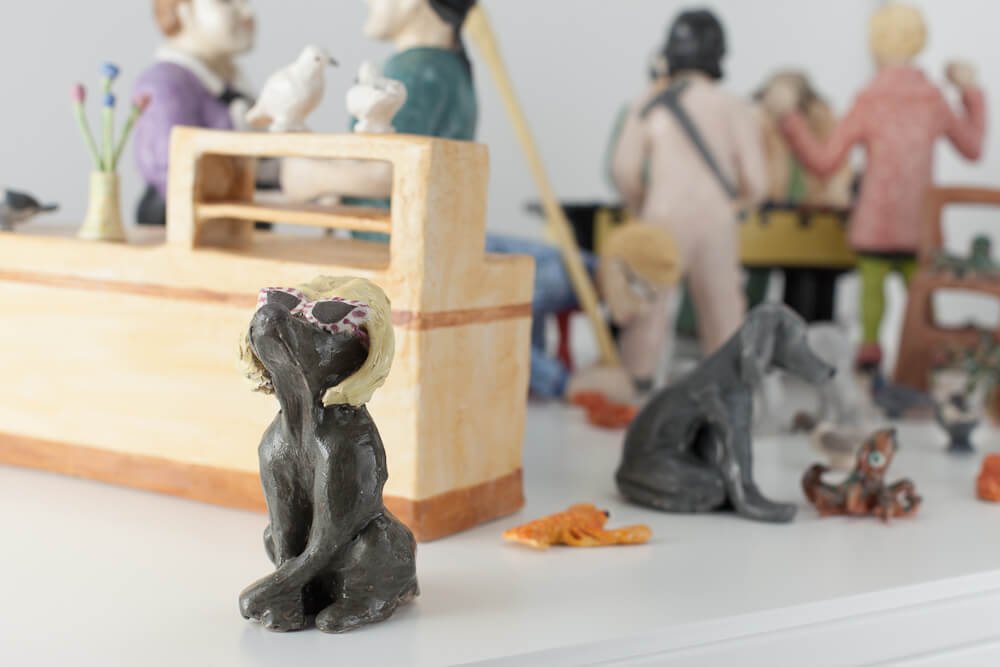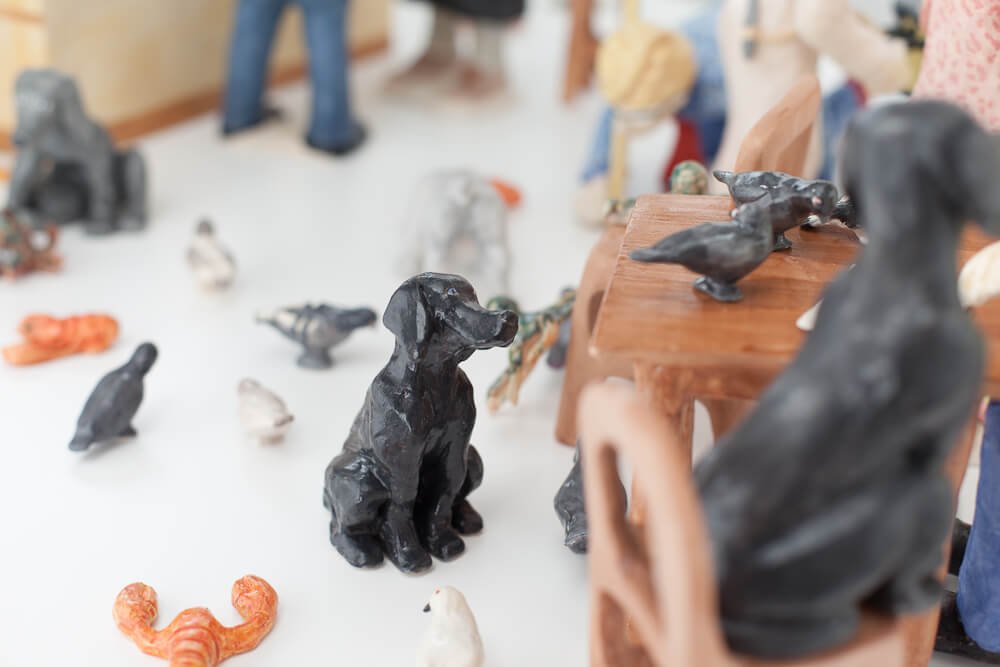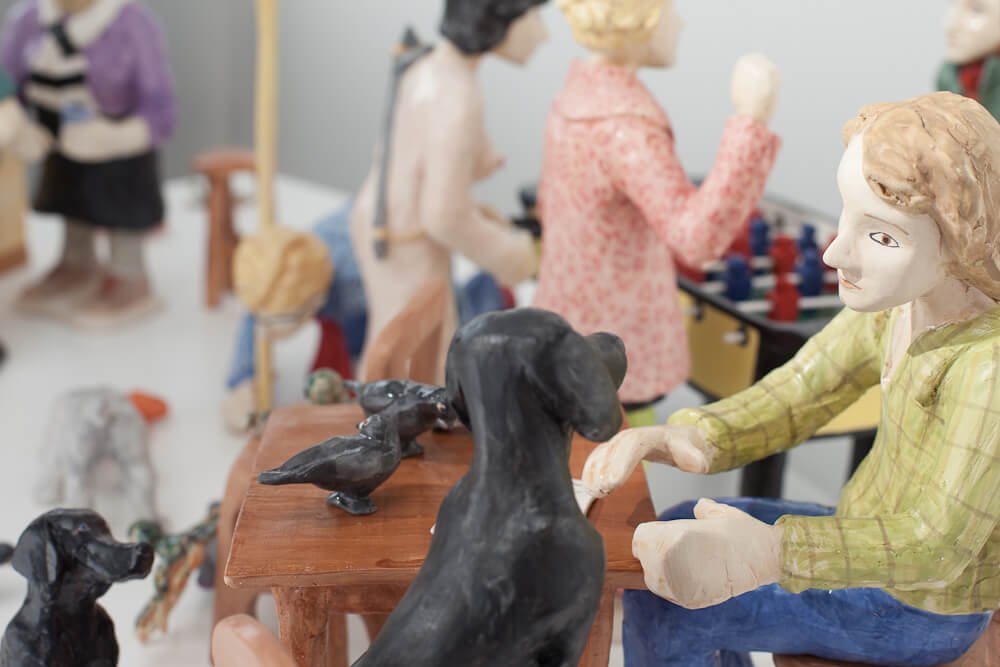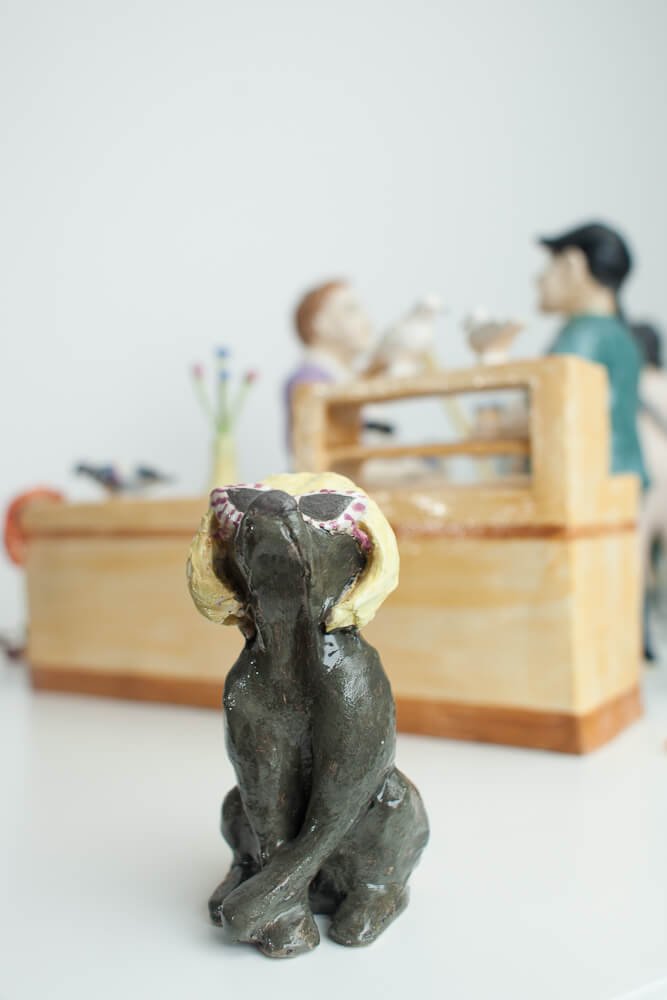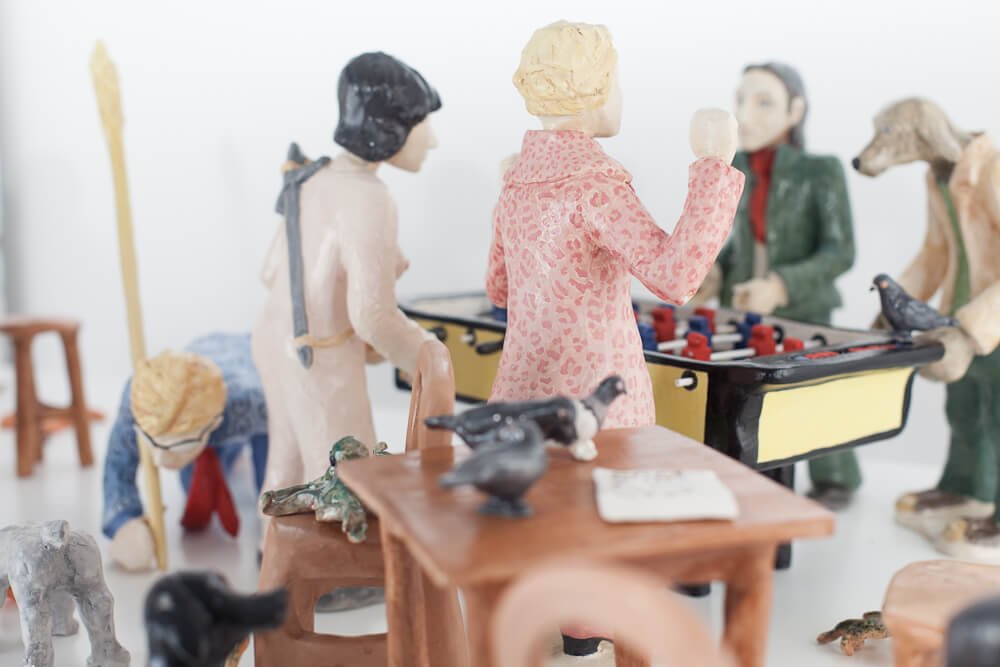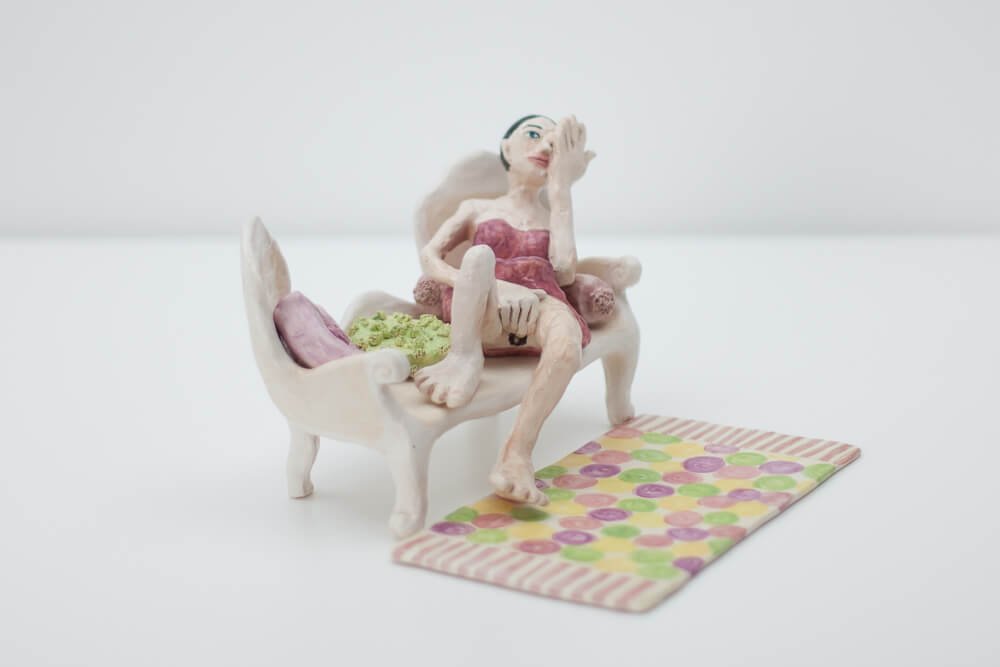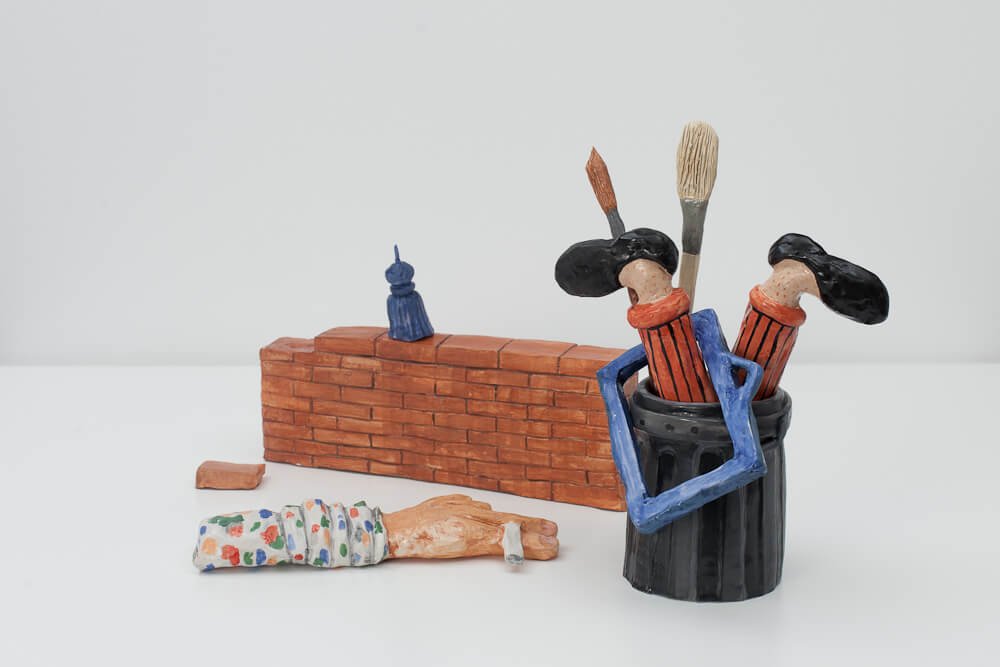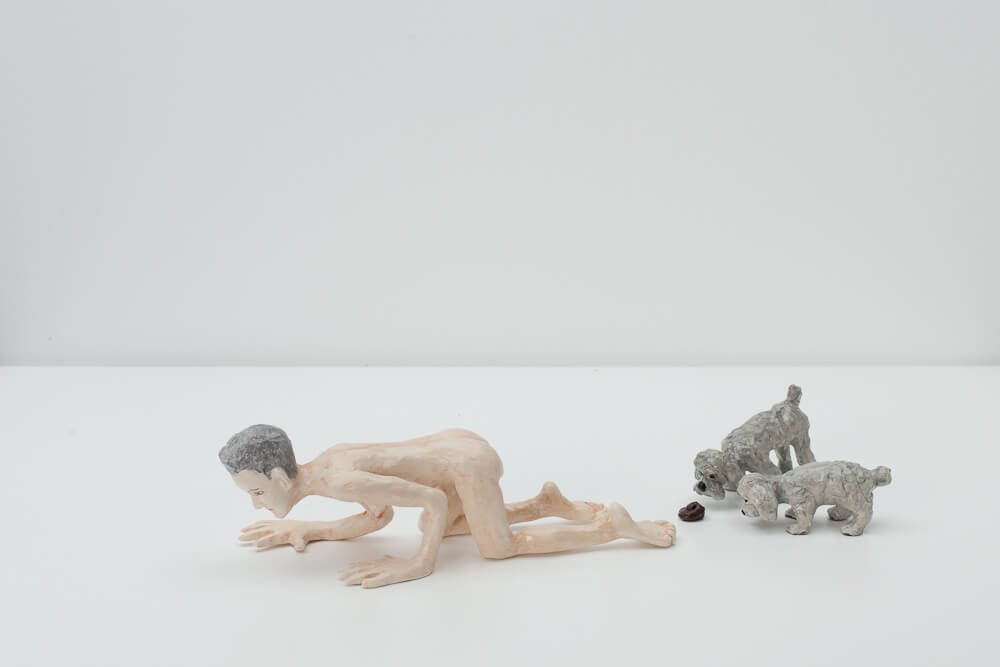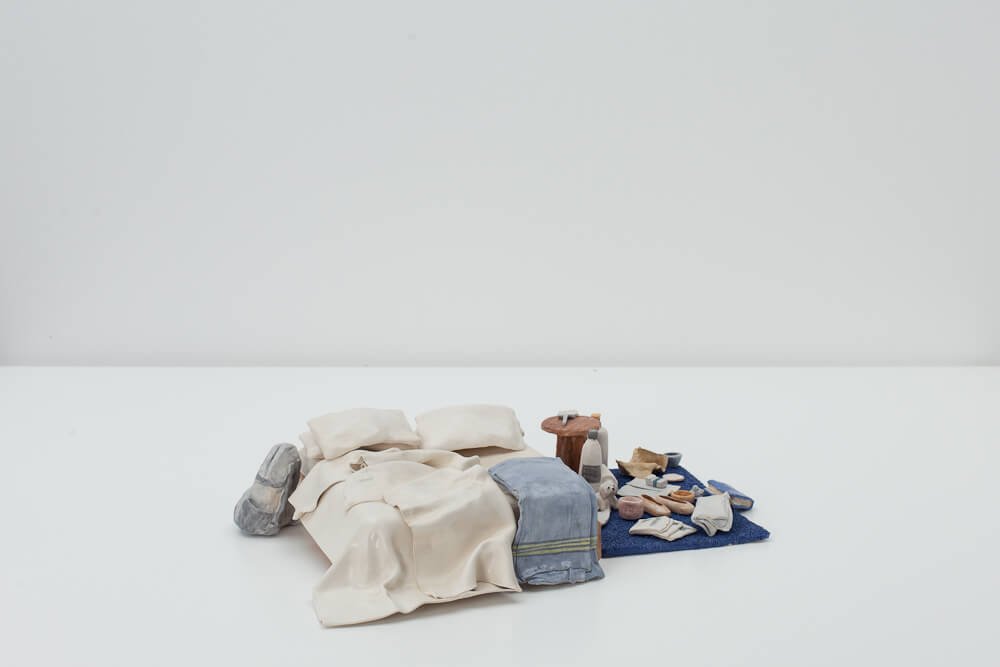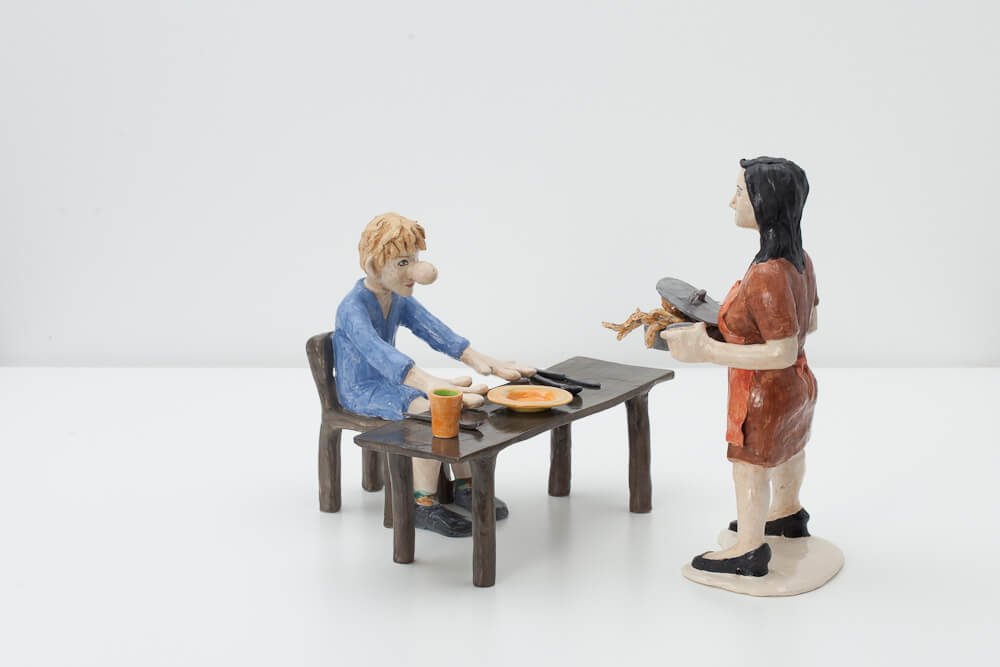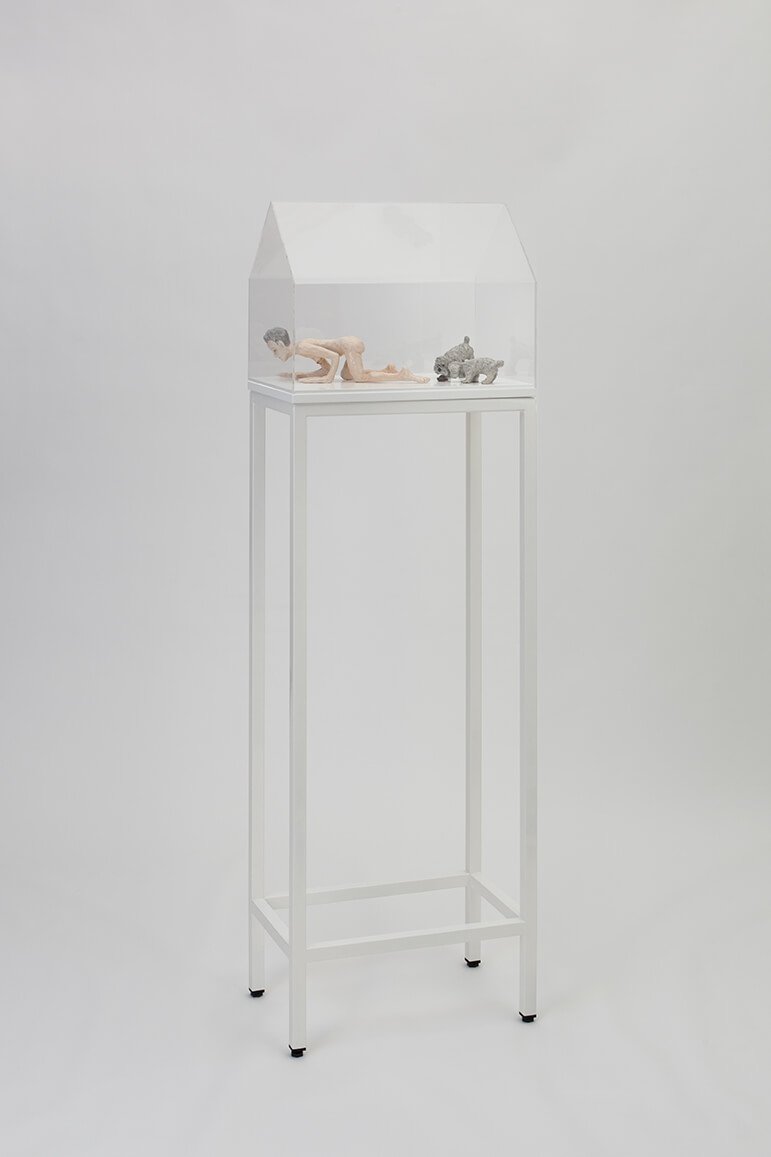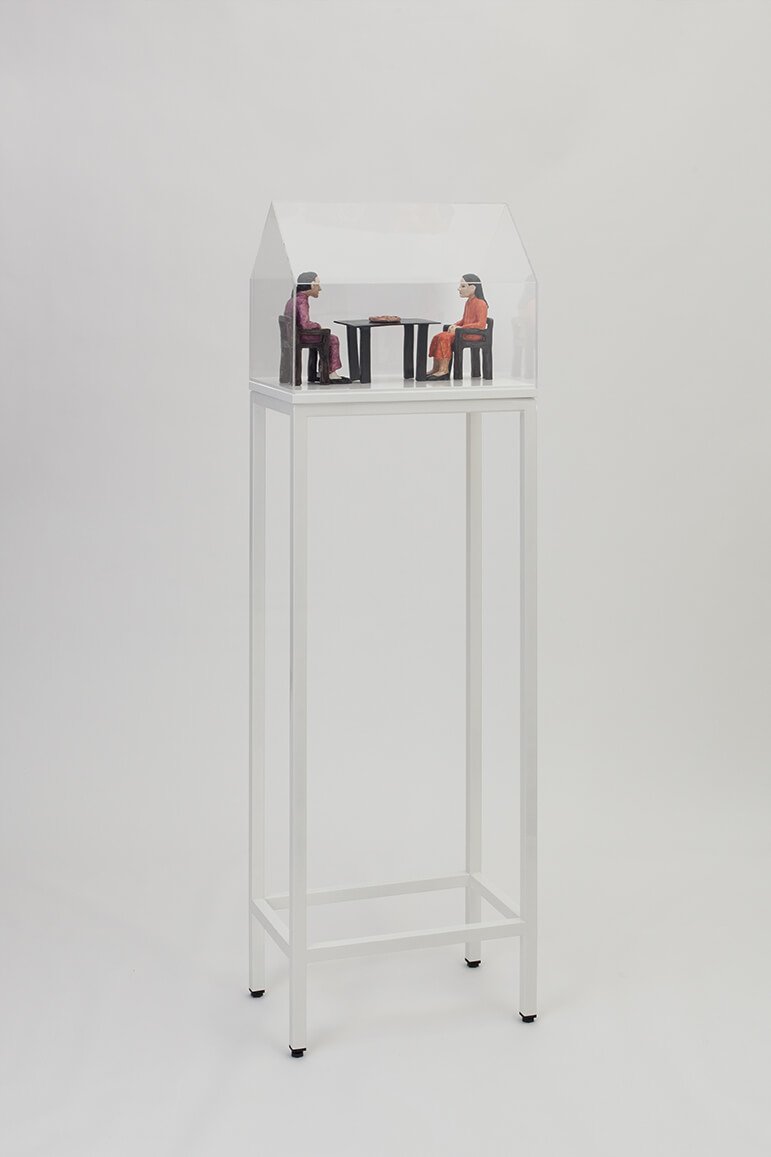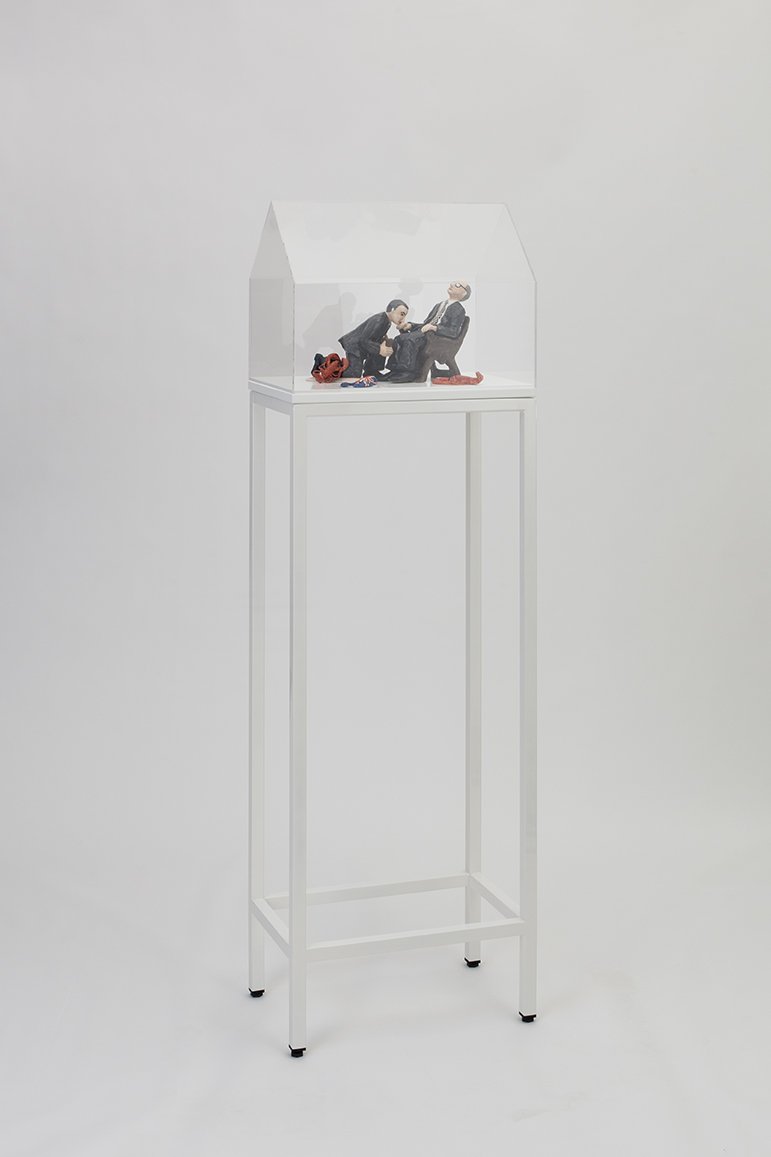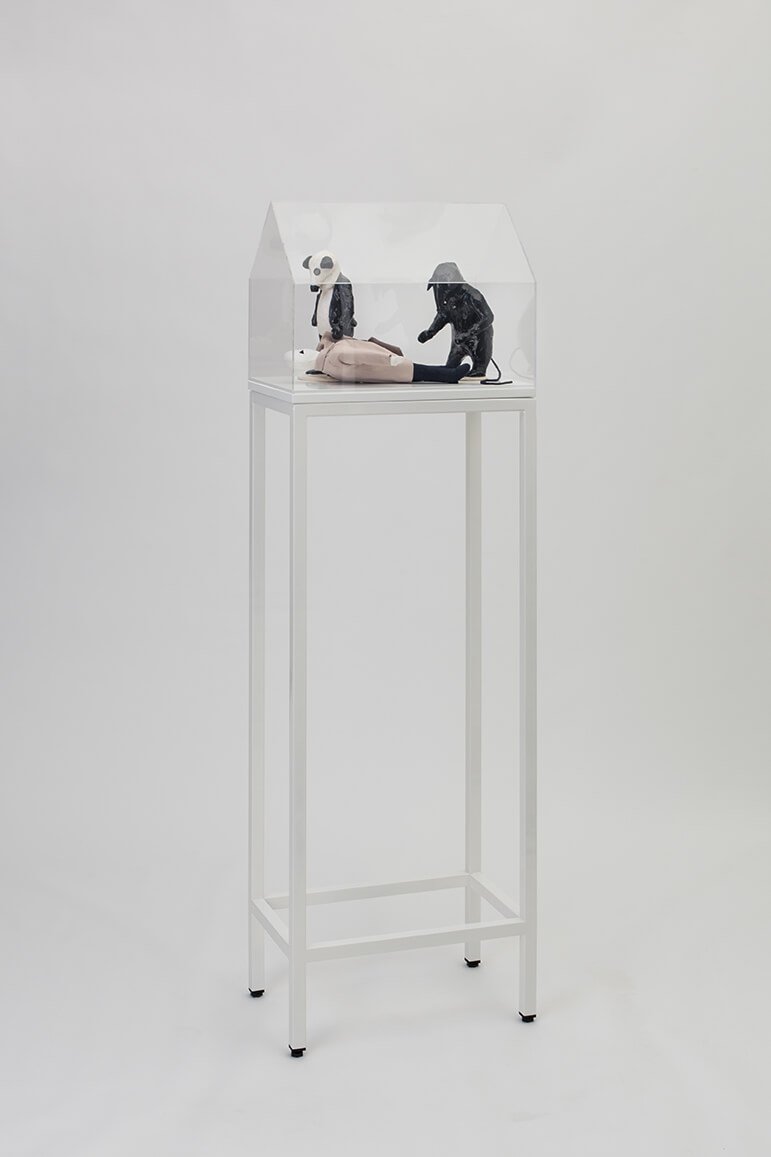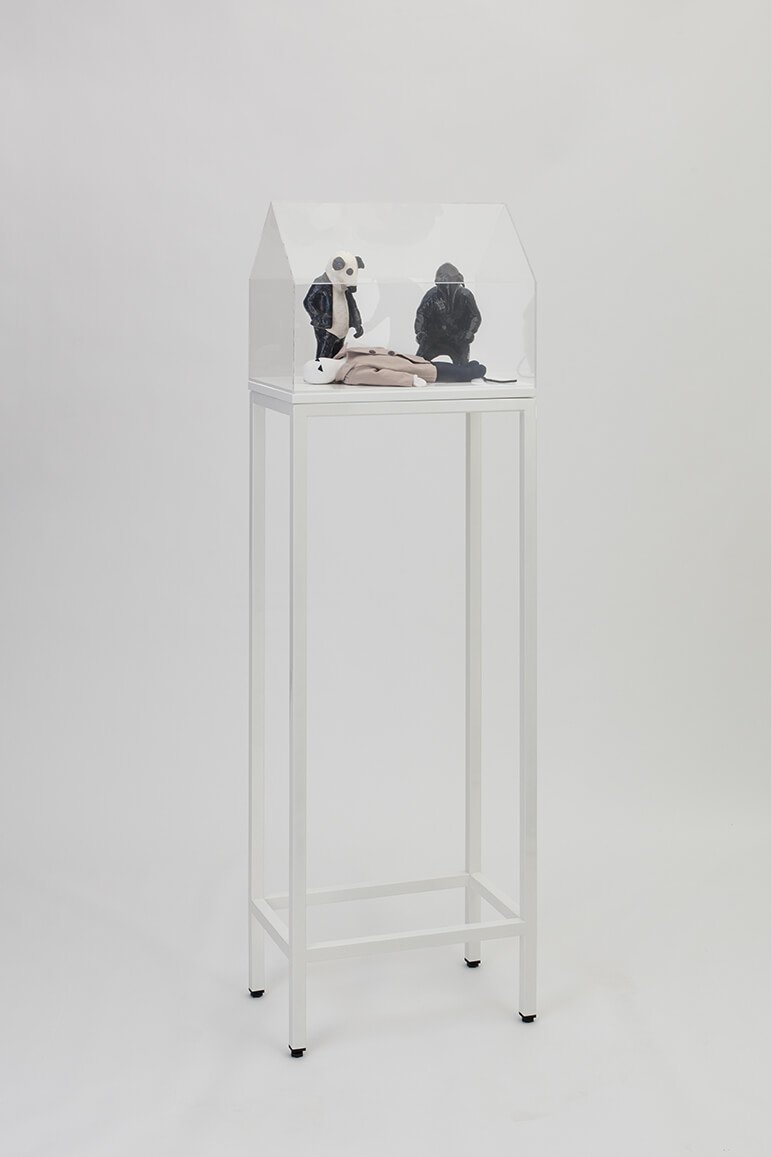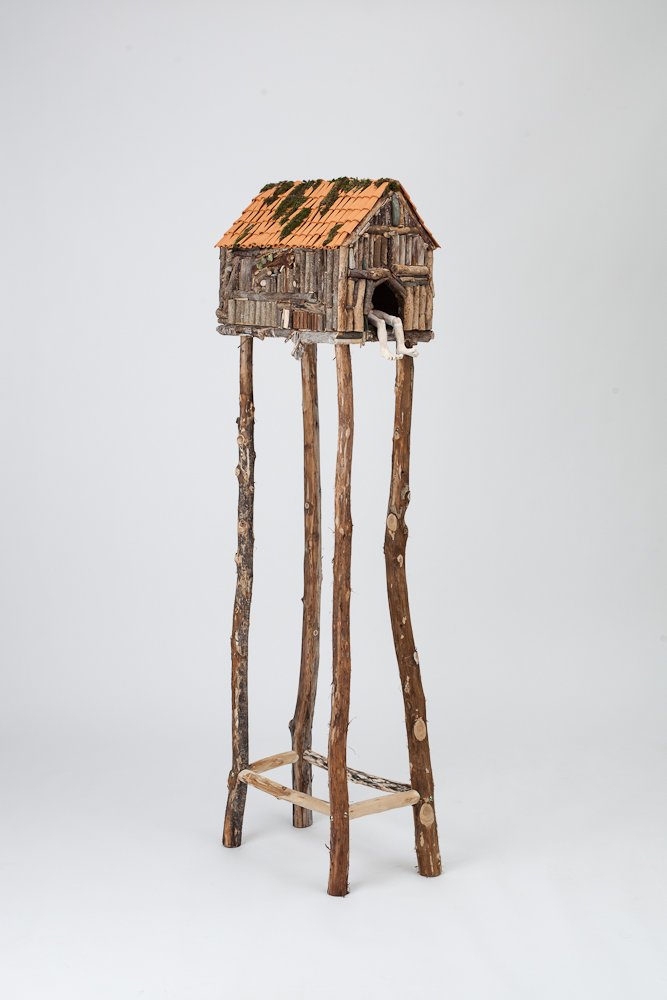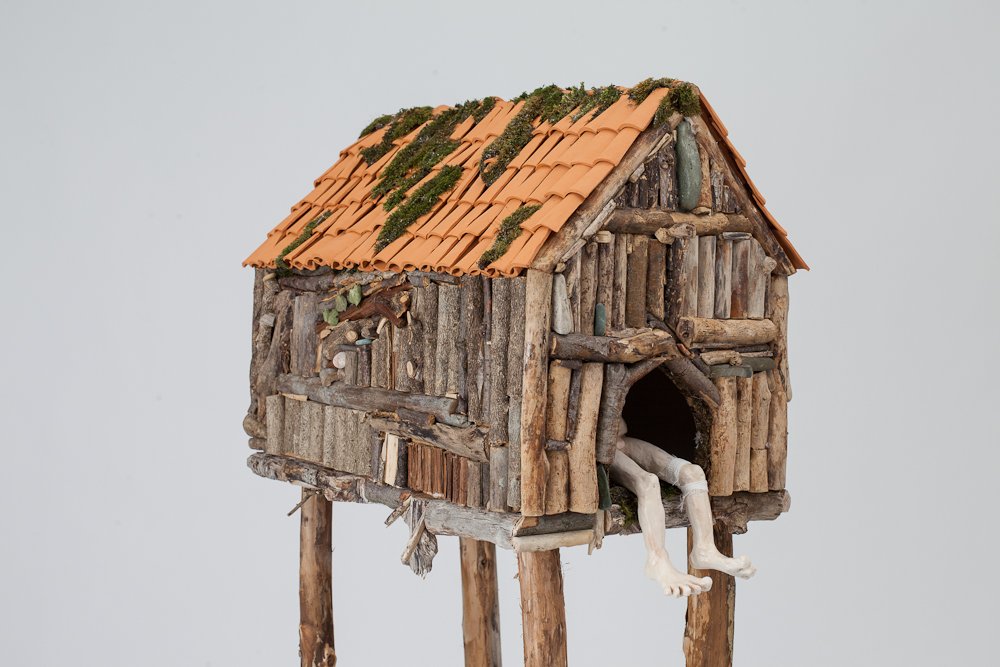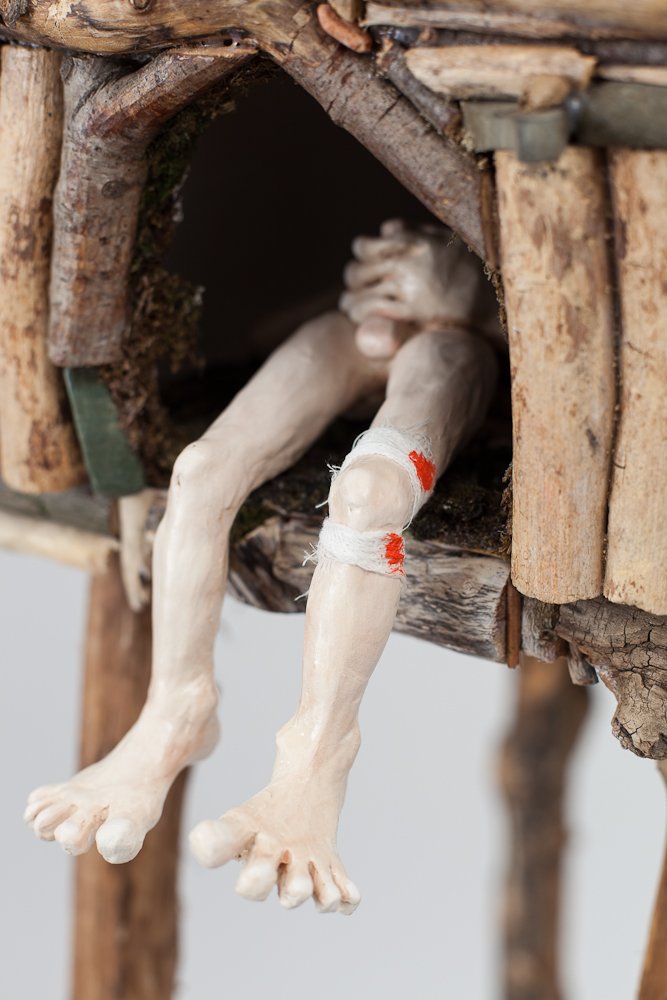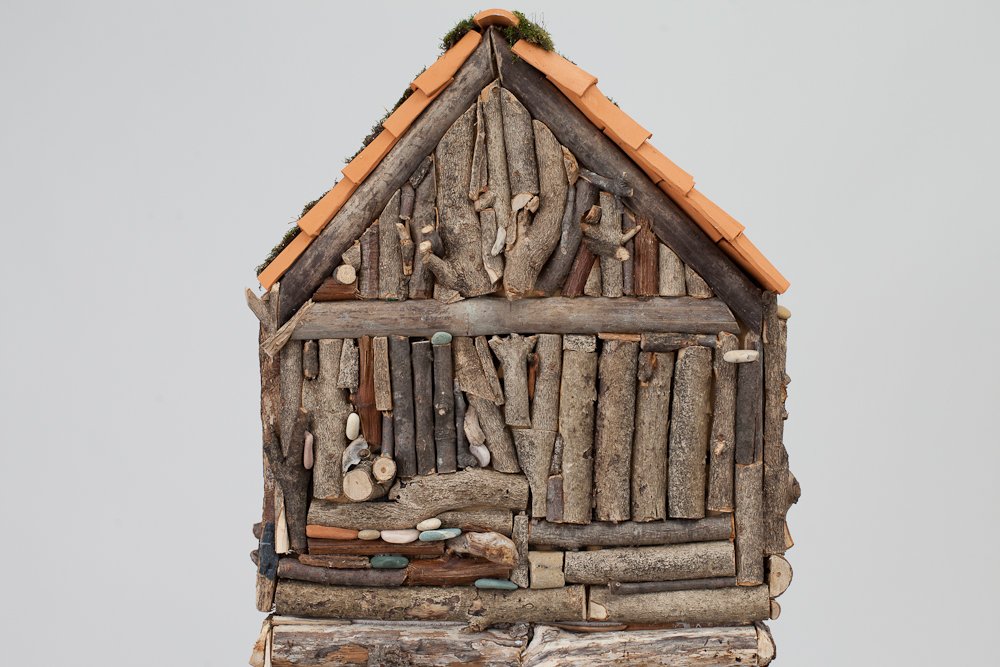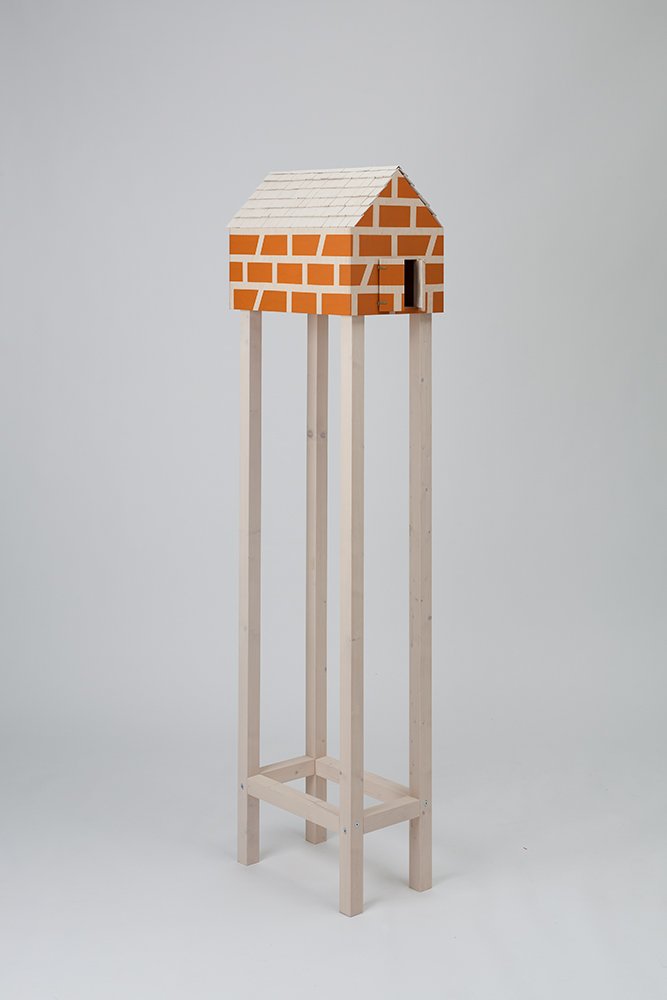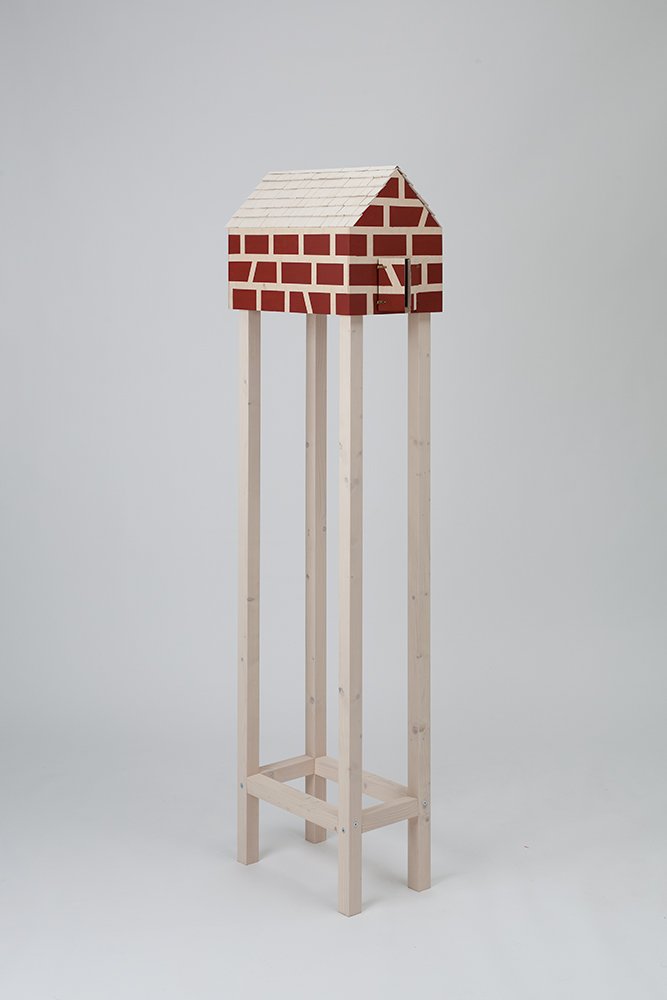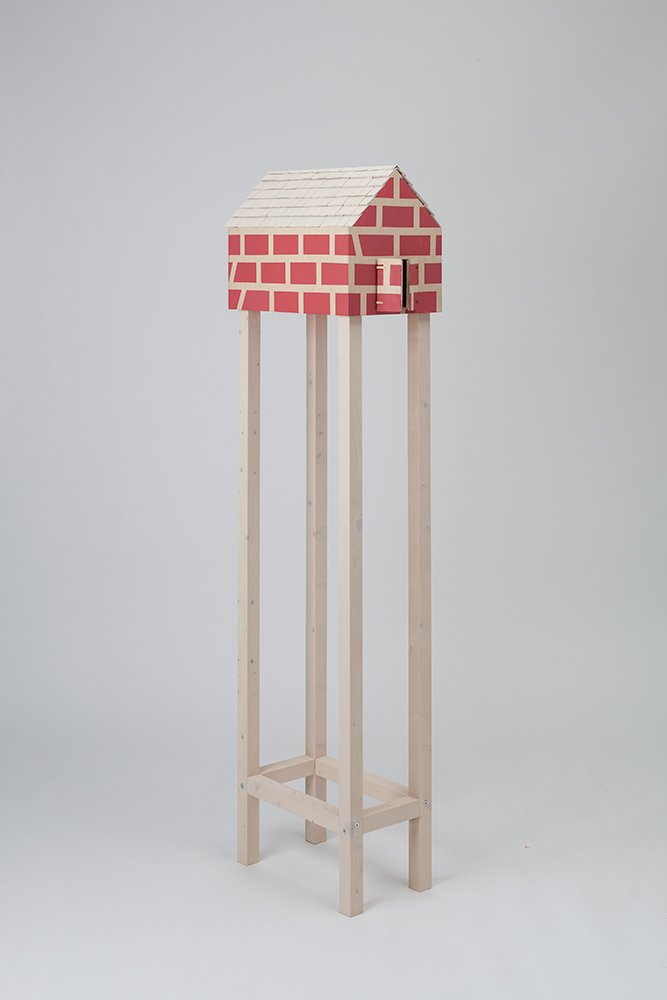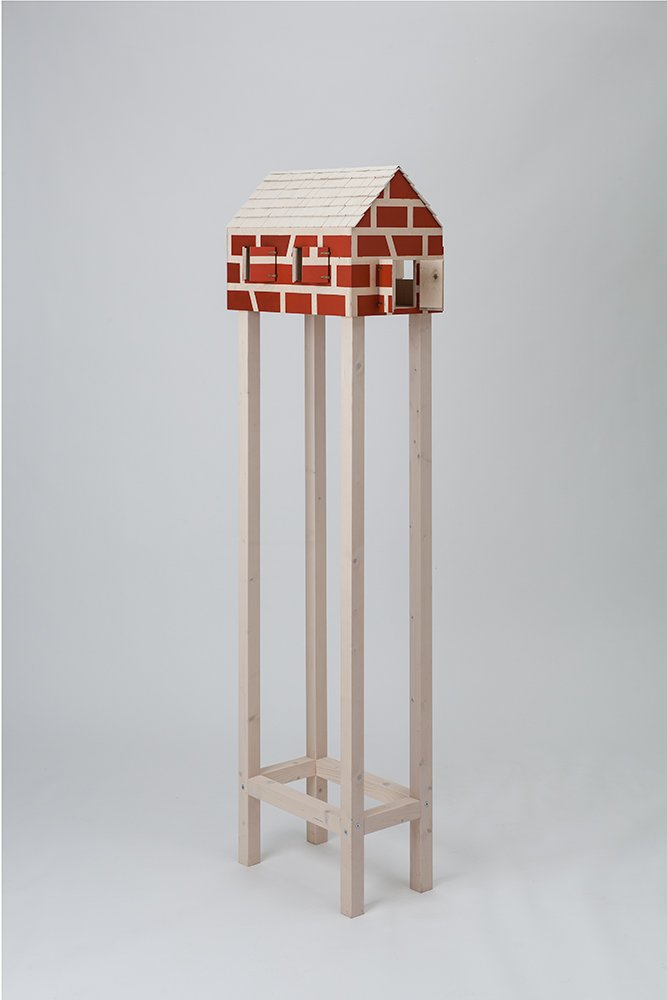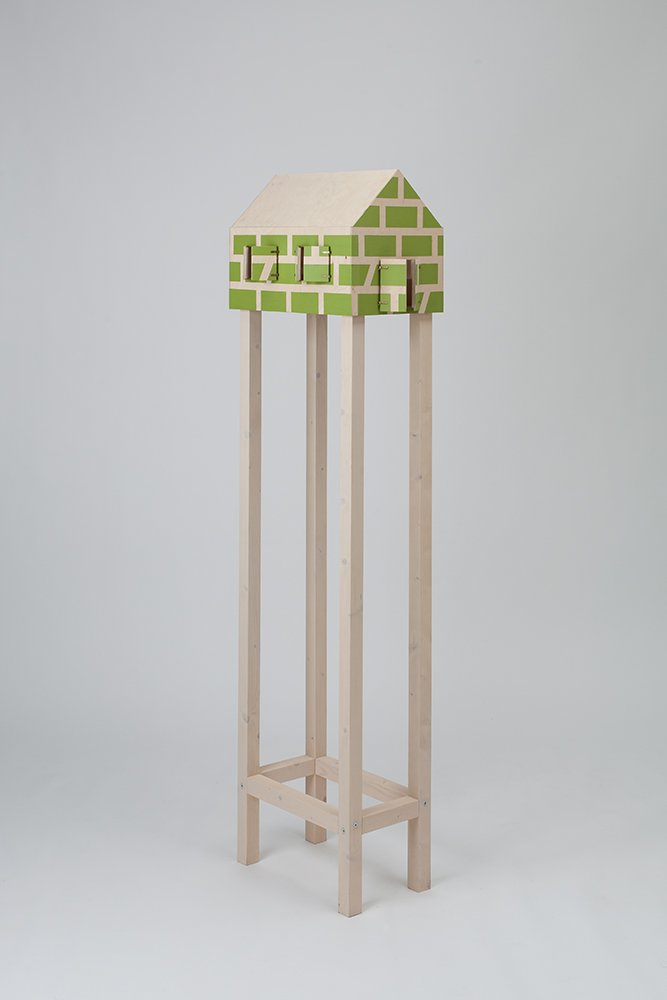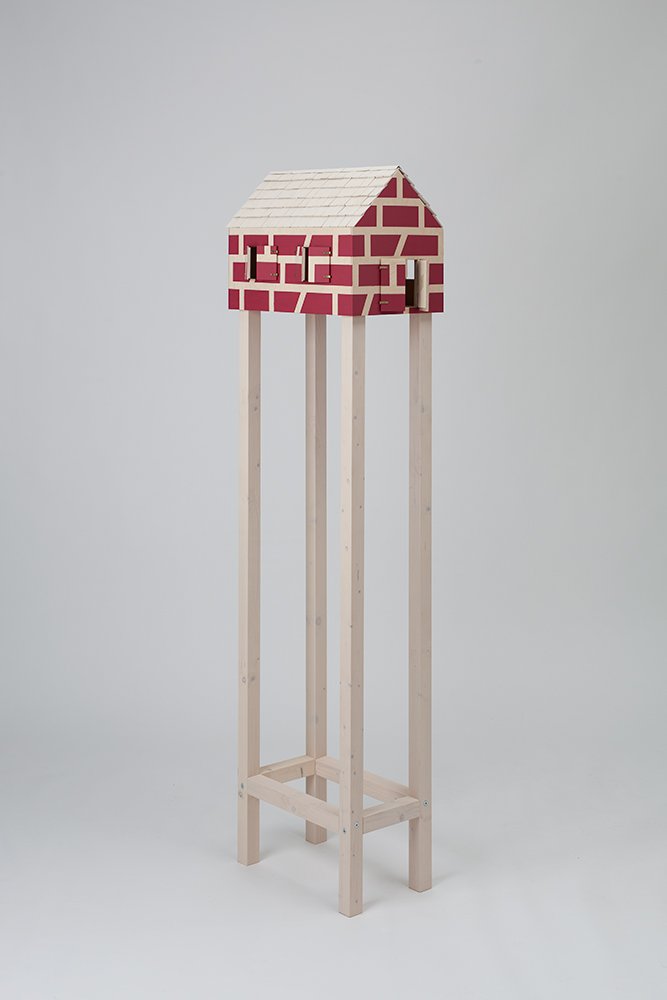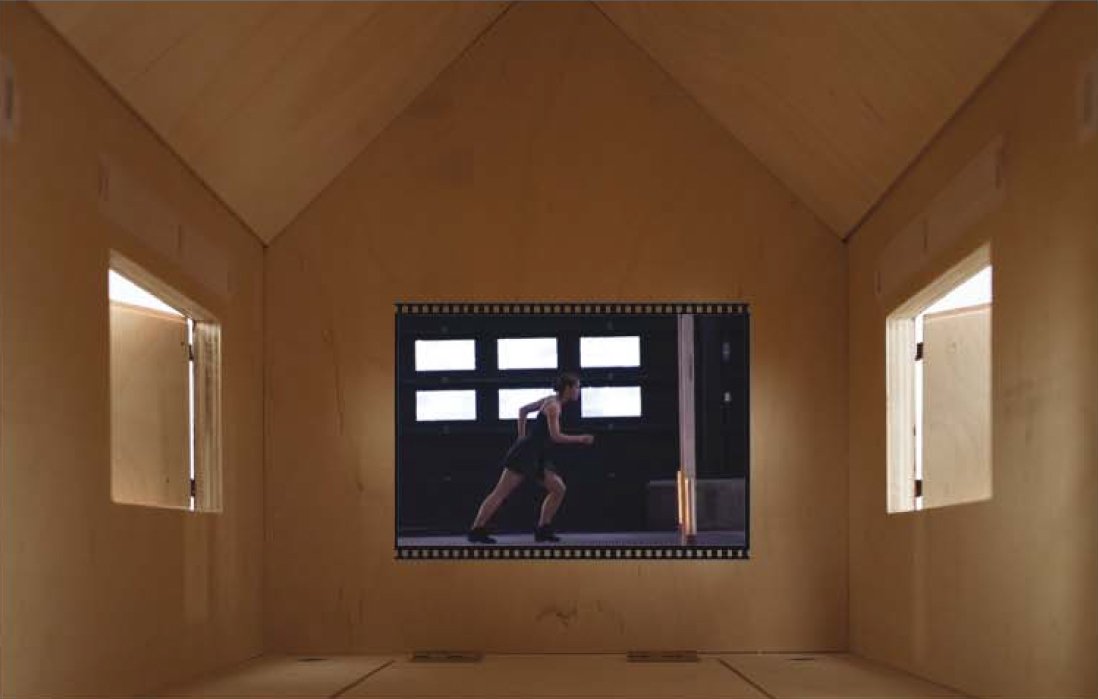Bark$ Bashes and Love

OTHER
January 31, 2021
They try to make all our mistakes
January 10, 2021"When I am dead I hope it may be said: His sins were scarlet but his books were read."
Hilaire Belloc
BARK$ BASHES AND LOVE è il titolo di una serie di opere che Annarosa Romano e Paolo Monterisi, R&M, collocano ironicamente nel close out del mercato dell'arte aprendo un dialogo immaginario con il lavoro di altri artisti, le loro biografie e il mondo del collezionismo. Il punto di vista di un mercato standardizzato e affettato nella sua magnifica eloquenza e nelle sue mascherate strategie di marketing è assunto a modello di potenziale narrativo.
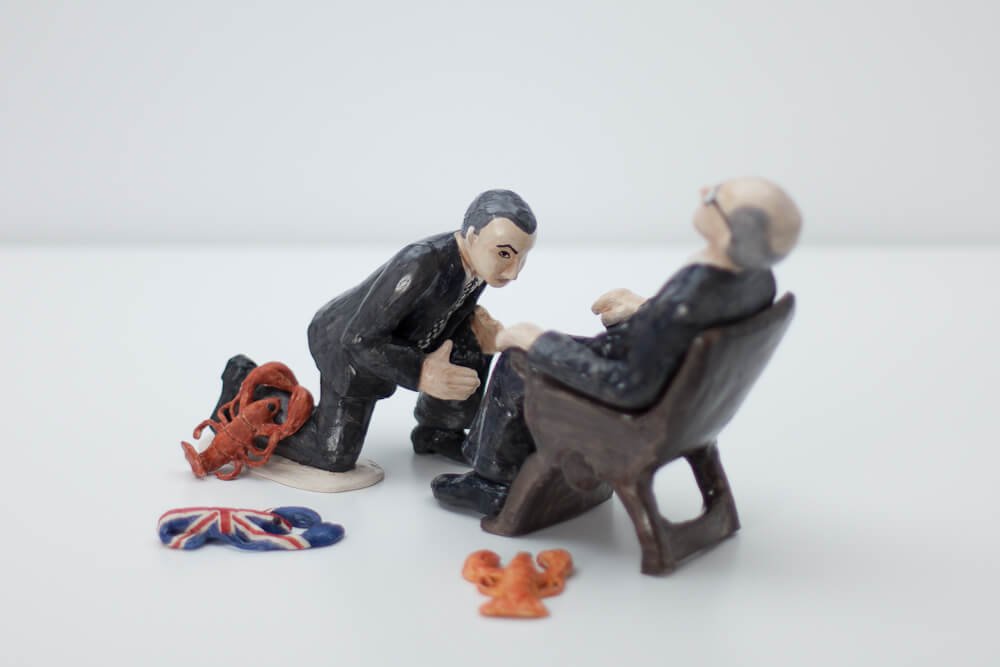
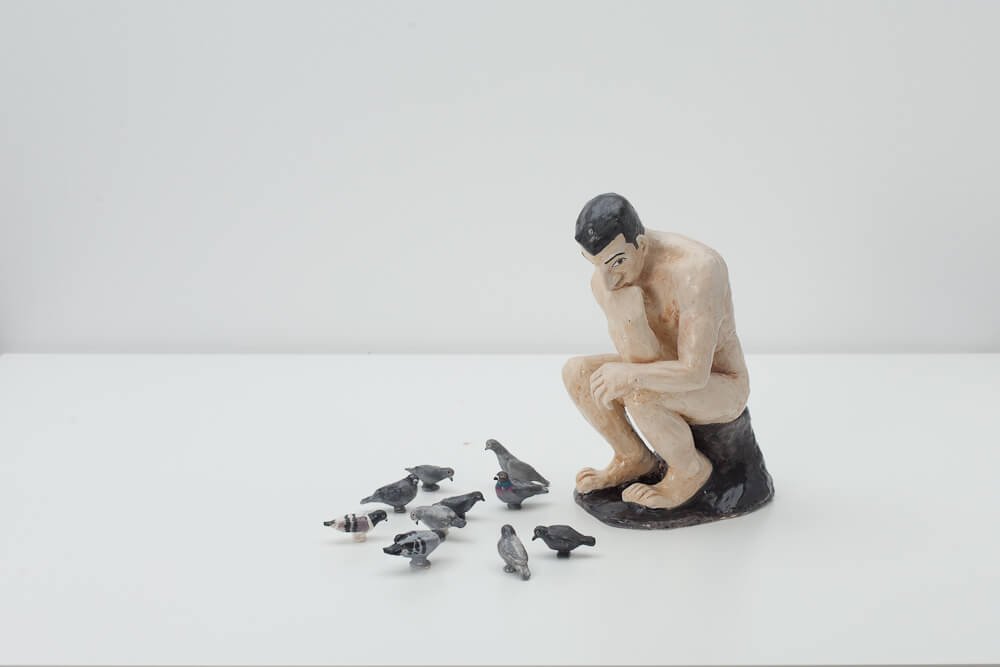
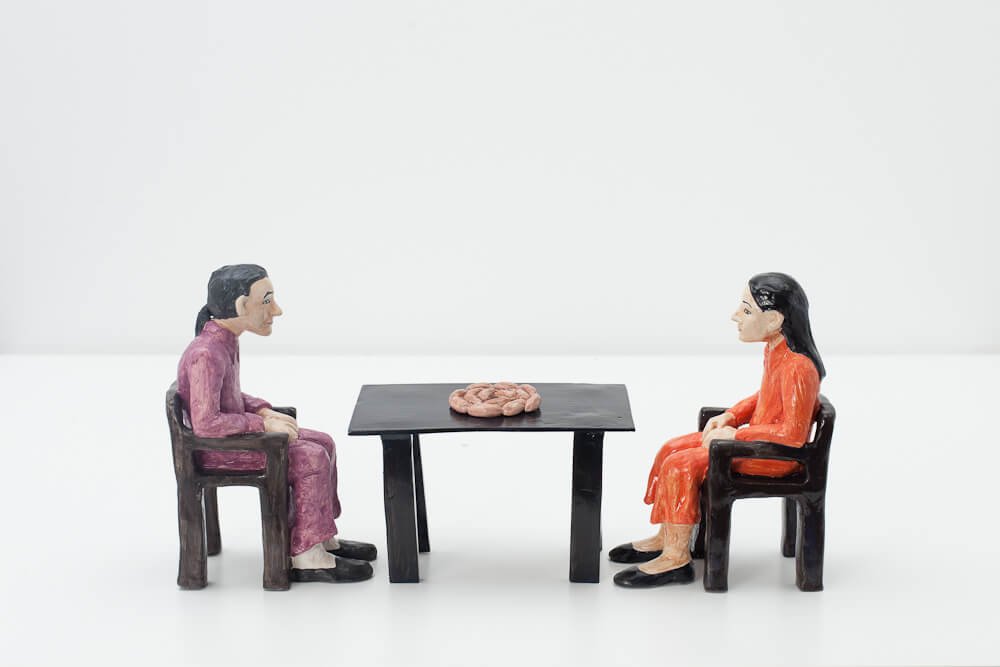
Un filo rosso con trame, conflitti, liti, suspence, banalità, tragedie e tradimenti, che mostra o cela malamente il tappeto verde dei suoi trucchi .- Forse che Amleto, alla fine della tragedia si alza e dice: "Non voglio morire"?. No la sua parte è finita e lui rimane la disteso. Ecco la differenza, tra arte e spazzatura. Nella spazzatura tutto è sgangherato, e l'unica cosa che conta è il quattrino, mentre l'arte è controllata, l'arte è manipolata, l'arte è sempre truccata. E così che fa breccia nel cuore umano", (1) riferisce Alvin Pepler a - Nathan Zuckerman, scatenato - nel celebre romanzo comico e brutale di Philip Roth. Altro filone e modello narrativo nelle opere di R&M è il truffato perdente, l'emarginato che sogna il successo, il risentimento del tradito in amore che non trova altro sbocco se non l'esagerata messa in scena della sua sofferenza. L'espedi ente con cui suggeriscono le tracce di un sistema dell'arte - come i punti di imbastitura di un vestito di sartoria di buona fattura, punti che vengono rimossi all'ultimo momento - è l'allusione a un network domestico delle relazioni possibili e nevrotiche tra artisti di provenienza, anche geografica, diversa e improbabile. Le opere in ceramica, isolate nelle teche trasparenti a forma di casette, e riproducenti artisti, opere e video di artisti di successo, ingaggiano un filone narrativo che moltiplica, o almeno sdoppia, la riconoscibilità di un'opera d'arte, in una serie di nessi apparentemente owi o volutamente banali, quanto lo possono essere i racconti prevedi bili e talvolta violenti di due amanti alla fine, o all'inizio, della loro storia. Come può capitare, non volendo, di assistere ad una discussione imbarazzante quando si abbassa una maniglia, si apre una porta e ci si ritrova, nostro malgrado, ad essere testimoni di un clamoroso fatto intimo. In queste opere, R&M, mettono in scena un fermo immagine spiazzante nel suo immediato ed evidente enunciato, che riproduce smaccatamente e in qualche modo amplifica opere d'arte riconosciute e riconoscibili, in un sistema dove ormai è gioco consolidato quello del riferimento diretto ad altri artisti. Come feticci preziosi di un sistema che oltre al topos specifico della provocazione artistica contiene anche la smaccata e indissolubile vocazione di mettersi in vendita, anzi a sedurre il pubblico con artifizi di marketing. Ma l'impianto, il contenuto, la messa in scena e la fattura delle opere, dei corpi delle opere vorremmo dire, è più raffinata e articolata. Gli autori sembrano suggerire che anche il corpo è un 'bene rifugio', come lo è l'arte; per sopravvivere è necessario un corpo, un buon corpo, un corpo che soddisfi e che sia presente quando ne abbiamo bisogno, e disponibile ad essere amato e ad amare senza esso debba chiedere il permesso. R&M indagano i meccanismi sociali della seduzione e gli archetipi della società globalizzata riscrivendo in forma plastica una psicopatologia della vita quotidiana. Corpi disponibili quindi anche con i loro possibili difetti ("non è poi così strano, la maggior parte della gente sente che il corpo non ha colpa dei suoi crimini, come non ne hanno gli animali e le piante"-2-). Così, nell'opera - Madame et Monsieur Maillechort - nome della lega di rame, nichel e zinco chiamata anche 'argentone', scoperta dai due maestri fonditori francesi Maillet e Chorier ai primi dell'ottocento - due monumentali e giovani figure femminili sono unite da una voluminosa capigliatura, una autentica coda corvina che le lega beatificandole nella loro posizione maliziosa: due opposte e simmetriche lettrici sognanti. Due gemelle 'astrali' in ceramica bianco argento, due corpi femminili e lunari, liberi di sognare, di sorridere e di leggere, uniti da un piccolo' ma vistoso difetto: una coda che esce volutamente dall'ano e che le lega morbidamente e quasi accidental mente in una posa di esplicita nostalgia. Una nuova categoria di 'cittadine' nate con una 'voglia' particolare e sottoposte a leggi particolari che, se osservate, ci costringono, con intermittenza, a spostare il nostro sguardo dall'una all'altra.... "Nessuno sa bene cosa fare con loro. Perlopiù tendiamo a guardarli come l'illusione ottica di un vaso creato dalla silhouette di due persone che si baciano. Adesso è un vaso. É entrambe le cose! Può il mondo sostenere una simile contraddizione? E questa era anche meglio, perché col variare dell'illusione dalla bellezza alla bruttezza, variavamo anche noi. Eravamo più brutte di lei, poi di colpo eravamo fortunate a non essere lei, ma poi ecco che, da questa angolazione, era troppo bella da sopportare. Era entrambe le cose, e il mondo continuava a girare."(3) Qualcuno "del mestiere", ha recentemente paragonato l'attività compulsiva dei musei, ad un circo che ha la necessità, se non la vocazione, di emulare l'esibizioni smo dei programmi televisivi e pornografici, e ci ricorda che Tertulliano già denunciava la "turbolenza plebea e sempre più cruenta degli stadi, tutti questi aspetti dei tempi Cartaginesi... venivano accorpati sotto il termine di idolatria..." (4). Qualcun'altro, invece, all'inizio della storia del collezionismo contemporaneo si è posto delle domande sia sul significato della sessualità nella pornografia che su quella particolare disposizione che fa di un collezionista un accumulatore e un esperto di "cose ". Quando un collezionista di nome Eduard Fuchs, ha inaugurato quell'attitudine e quella pratica che lo faranno fondatore di un archivio e di un filone innovativo nella storia del costume, l'arte erotica e la caricatura sono entrate di diritto nella storia dell'arte e oggi la fanno da "servo e padrone" tra le cure e le urla di decine di migliaia di adoratori. R&M sembrano partire proprio da qui, o meglio sanno di essere, ci dicono, proprio dentro "quell'insalata di parole ed opere" che è anche l'occasione che permette di toccare con mano quel che di fallace ha l'opposizione tra il "preteso concreto e il preteso figurato", tra il vasetto di mostarda Bornibus e il das Ding della fine della metafisica, nell'annodamento tra la 'cosa' e il linguaggio, tra le 'cosuccie' che si trovano e l'ostilità della cosa cercata. Con il doppio orientamento delle loro opere, con il bis delle loro riproduzioni, con lo scarto e il 'vuoto' tra un'opera d'arte bidimensionale e la sua riproposta plastica in una cerami ca 'souvenir à venir arrivano a costruire il palchetto della "comédie humaine". Gli autori ci dicono ancora : "C'è sempre un buco nell'arte, un vuoto da riempire, tutti scherziamo sull'arte come sui maccheroni, che sono buchi con qualcosa attorno, o sui cannoni, forse anche l'arte è un buco con qualcosa attorno, per fortuna lo zio Bornibus, il dio Bornibus, è lui che riempie i buchi e i vasetti di mostarda per noi; ma non riusciamo troppo a giocare con i cannoni... e l'arte ci disorienta, è come se non riuscissimo a capirne bene le regole, ci sforziamo, ci applichiamo, ma nella nostra vita 'pratica', tra Spresiano e Covolo dove lavoriamo, abbiamo un vuoto, anche geografico, da riempire e anche noi litighiamo sempre, ci facciamo piccole guerre e non sappiamo bene perché. Annarosa, che è vegetariana, dice che ci sono troppe macellerie in Veneto, ed è per questo che litighiamo, perché io mangio carne, e lei no! Forse dobbiamo cambiare religione o aggiungerne una in più, e smetterla di ascoltare continue profezie catastrofiche, o forse dobbiamo lasciare che gli oggetti si riproducano da soli e si innamorino anche senza di noi..., dobbiamo essere piu attenti al caso? Forse dobbiamo semplicemente fare altro! È che continuiamo a cercare la S mancante, la Esse finale di Bornibus !...". E ci ricordano che uno dei primi film 'pornopubblicitari' è stato realizzato da Méliès e commissionato proprio dalla mostarda Bornibus, a cui mancava sempre una S per concludere la parola. "Amen ", dicono R&M. E qui non ci sarebbe più tanto da aggiungere, se non fosse che il trucco svela se stesso, e registra un po' voyeuristica mente quello che tutti, o quasi tutti sanno, o si dicono, ad esempio a tavola, in gradevole compagnia. A tavola diventiamo tutti "addetti ai lavori", c'è da chiedersi se a Paul Mc. Carthy piacciono i polipi alla Luciana come nelle ricette di Nigella Lawson! Risposta: PMC & NL, un'altra delle loro opere. Ed è sempre a tavola che tutti, o quasi tutti, e non solo nel 'foyer dell'arte', raccontano e sparlottano delle loro storie amorose, dei dubbi sul futuro della vita, dei nuovi amori, delle depressioni e delle passioni, e della sempre presente necessità di verità, di amore......e di denaro. “Così, - ci dicono ancora R&M- rimandiamo sempre il momento di 'imparare', fingendoci indignati per questa o quella cosa, "...rimandando così il momento di imparare ciò che il suo incolto padre aveva tanto cercato di insegnargli: il terribile, incomprensibile modo in cui le scelte più accidentali, più banali, addirittura più comiche, producono gli esiti più sproporzionati. "(5) Insomma, stiamo parlando di arte, del suo nocciolo o della sua scorza? Stiamo parlando arte, di denaro, di amore, di litigi, di botte, di sesso e di fughe, di mistica e di eccitamenti! Bark$, Bashes and Love? Appunto. Robert Triet (1)Philip Roth- Zuckerman scatenato - Einaudi ... (2) Miranda July- No one belongs here more than you- Scribner, NY 2007. (3) Miranda July - No one belongs here more than you- Scribner, NY 2007. (4) Jean Clair - L'inverno della cultura - Skira, 2011. (5) Philip Roth - Indignation-Random House, NY 2009.
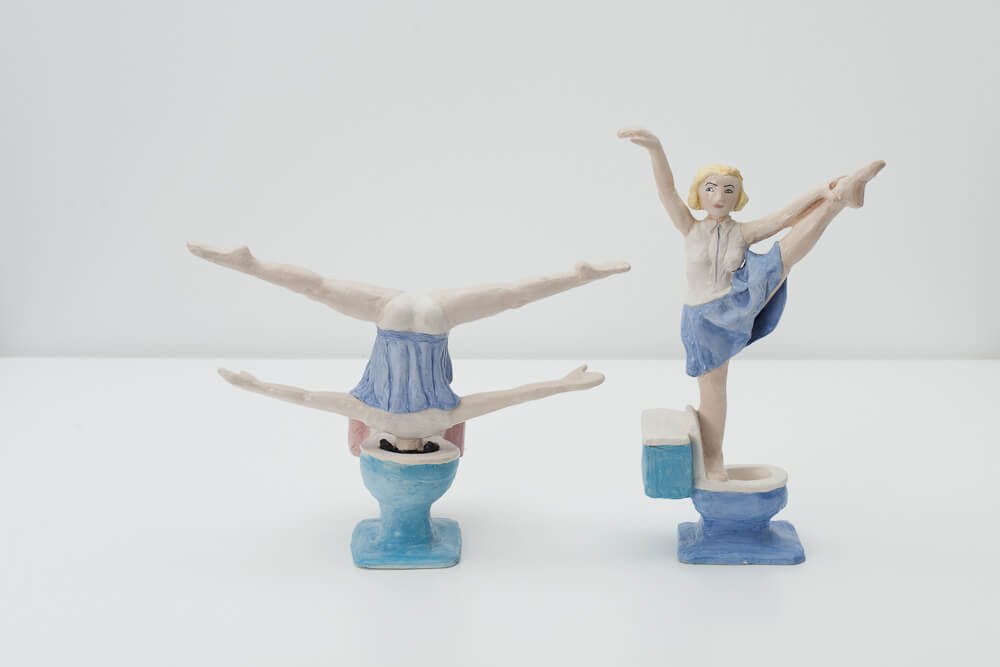
"When I am dead, I hope it may be said: His sins were scarlet, but his books were read." Hilaire Belloc BARKS, BASHES AND LOVE is the title of a series of works that Annarosa Romano and Paolo Monterisi (R&M) ironically position as part of the closeout of the art market, triggering an imaginary dialogue with the work of other artists, their biographies and the world of collecting. The viewpoint of a standardized market, affected in its magnificent eloquence and veiled marketing strategies, is taken as the model for a potential narrative. A red thread with turns of plot, conflicts, clashes, suspense, banality, tragedies and betrayals, that displays or clumsily tries to conceal the gaming table of its tricks. "Forse che Amleto, alla fine della tragedia si alza e dice: "Non voglio morire"? No la sua parte è finita and he lies there. That is the difference, in point of fact, between schlock and art. Schlock goes every which way and couldn't care less about anything but the buck, and art is controlled, art is managed, art is always rigged. That is how it takes hold of the human heart," (1) says Alvin Pepler to Nathan Zuckerman (unbound), in the famous comic and brutal novel by Philip Roth. Another plot line and narrative model in the works of R&M is the swindled loser, the outcast who dreams of success, the resentment of the lover betrayed that finds no release other than the exaggerated enactment of his suffering. The device with which they suggest the tracks of an art system - like the tacking stitches of a bespoke jacket, which are removed at the last minute - is the allusion to a domestic network of possible and neurotic relationships among artists of different and improbable backgrounds, also in geographical terms. The ceramic works, isolated in transparent cases in the form of little houses, and reproducing successful artists, their works and videos, take up a narrative thread that multiplies or at least doubles the recognizability of an artwork, in a series of links that are as apparently obvious or intentionally banal as the predictable and sometimes violent stories of two lovers at the end, or the beginning, of their affair. Like what happens, unintentionally, when we find ourselves privy to an embarrassing argument, having turned a doorknob, opened the door and become the hapless witnesses to a vociferous private quarrel. In these works R&M freeze a frame that is disorienting in its immediate, evident statement, vividly reproducing and somehow amplifying recognized and recognizable artworks, in a system where the game of direct reference to other artists has become, at this point, established practice. Like precious fetishes of a system that beyond the specific topos of artistic provocation also contains an unsavory, enduring vocation for putting itself up for grabs, seducing the audience with marketing ploys. But the structure, the content, the staging and crafting of the works, we might say, is more refined and detailed. The artists seem to suggest that even the body is a "refuge asset", like art; a body is necessary to survive, a good body, a body that satisfies and is there when we need it, available to be loved and to love, without having to ask its permission. R&M investigate the social mechanisms of seduction and the archetypes of the globalized society, rewriting a psychopathology of everyday life in plastic form. Available bodies, then, also with their possible defects ("This is not unusual, most people feel that their bodies are innocent of their crimes, like animals or plants") (2). So in the work Madame et Monsieur Maillechort - the name of the alloy of copper, nickel and zinc also known as "argentan", discovered by the two French master smelters Maillet and Chorier in the early 1800s - two monumental young female figures are joined by a voluminous hair-do, an authentic raven's tail that bonds them blissfully in their mischievous position: two opposite and symmetrical dreaming readers. Two "astral” twins in white-silver ceramic, two feminine and lunar bodies, free to dream, to smile and read, joined by a "minor" yet glaring defect: a tail that intentionally emerges from the anus, binding them softly and almost accidentally in a pose of explicit nostalgia. A new category of "citizens" born with a particular "birthmark" and subject to particular laws which, if obeyed, force us to intermittently shift our gaze from one to the other... Nobody knows what to do with them. We mostly want to stare at them like the optical illusion of a vase made out of the silhouette of two people kissing. Now it is a vase... now it could only be two people kissing ...oh, but it is so completely a vase. It is both! Can the world sustain such a contradiction? And this was even better, because as the illusion of prettiness and horribleness flipped back and forth, we flipped with it. We were uglier than her, then suddenly we were lucky not to be her, but then again, at this angle she was too lovely to bear. She was both, we were both, and the world continued to spin." (3) Someone "from the trade" recently compared the compulsive activity of museums to a circus that has the need, if not the vocation, to emulate the exhibitionism of television programs and pornography, which reminds us that Tertullian had already observed the "plebeian and ever more bloodthirsty uproar of the stadiums, all these aspects of the Carthaginian times [...] grouped under the term idolatry..." (4). Someone else, on the other hand, at the start of the history of contemporary collecting, has raised questions about the meaning of sexuality in pornography, and on the particular disposition that makes a collector an accumulator of and expert on things”. When a collector named Eduard Fuchs ushered in the attitude and practice that would make him the founder of an archive and an innovative line of research in the history of mores, erotic art and caricature took a rightful place in art history, and today they play both “master and servant" amidst the ministrations and cries of tens of thousands of worshippers. R&M seem to start right here, or more precisely are aware, they tell us, of being precisely inside "that salad of words and works" that is also the opportunity to reach out and touch what is fallacious in the opposition between the "purportedly concrete and the purportedly figurative", between the jar of Bornibus mustard and "das Ding" of the end of metaphysics, in the binding between the thing" and language, between the "trifles" that are found and the hostility of the thing pursued. With the dual orientation of their works, the encore of their reproductions, the gap and "void' between a work of two-dimensional art and its sculptural replica, a ceramic "souvenir à venir", they achieve the construction of the stage of the "comédie humaine". The artists explain: "There is always a hole in art, a gap to fill. We all joke about art, like maccheroni, which are holes with something around them, or like cannons. Maybe art, too, is a hole with something around it. Luckily uncle Bornibus, the god Bornibus, fills the holes and the jars of mustard for us; but we are not really up to playing with cannons... Art disorients us, as if we were unable to fully grasp its rules. We make an effort, we work on it, but in our practical' life, between Spresiano and Covolo, where we work, we have a gap to fill that is also geographical. We too fight all the time, we make little wars and we don't really know why. Annarosa, who is a vegetarian, says there are too many butcher shops in the Veneto, and so we fight, because I eat meat and she doesn't! Maybe we should change religion or add one more, and quit listening to catastrophic prophecies. Or maybe we should let objects reproduce themselves and fall in love, even without us... should we pay more attention to chance? Maybe we should just do something else! But we continue to search for the missing S, the final Sin Bornibus!" They remind us that one of the first "pornadvertising" films was made by Méliès and commissioned precisely by Bornibus mustard, always lacking an S to complete the name. "Amen", say R&M. And at this point there would be little to add, were it not for the fact that the trick reveals itself, a rather voyeuristically records what everyone, or almost everyone, knows or says, at the dining table, for example, in good company. When eating we all become "sector professionals", and one wonders whether Paul McCarthy has a taste for octopus "alla Luciana", as in the recipes of Nigella Lawson! The answer: PMC &NL, another one of their works. It is at the dining table, and not just in the "foyer of art”, that everybody, or almost everybody, narrates and buzzes of love affairs, doubts about the future, new crushes, depression and passion, and the always pressing need for truth, for love... and for cash. “So we always postpone the moment of learning' - R&M tell us - pretending to be outraged by this or that." "And thus [he] has postponed learning what his uneducated father had been trying so hard to teach him all along: of the terrible, the incomprehensible way one's most banal, incidental, even comical choices achieve the most disproportionate result." (5) In short, are we talking about art, its kernel or its rind? We are talking about art, money, love, quarrels, blows, sex and escape, mystique and excitement! Bark$, Bashes and Love? Indeed. Robert Triet 1) Philip Roth - Zuckerman Unbound (2) Miranda July - No one belongs here more than you - Scribner, NY 2007. (3) Miranda July - op. cit. (4) Jean Clair - L'hiver de la culture - Flammarion 2011. (5) Philip Roth – Indignation - Random House, NY 2009.
- ES. Ceramica smaltata, metallo, plexiglass cm185x58x37
- MAU. Ceramica smaltata, metallo, plexiglass cm185x58x37
- SC. Ceramica smaltata, metallo, plexiglass cm185x58x37
- Maurizio. Ceramica smaltata, metallo, plexiglass cm 185x58x37
- G&G. Ceramica smaltata, metallo, plexiglass cm 185x58x37
- F&W. Ceramica smaltata, metallo, plexiglass cm185x58x37
- F&W. Ceramica smaltata, metallo, plexiglass cm185x58x37
- Demokratie ist lustig. Ceramica smaltata, metallo, plexiglass cm185x58x37
- BB&L ceramica smaltata, metallo, plexiglass cm185x120x90
- La maison d’Yvain. Wood, ceramic, acrylic cm160x60x40
- La maison d’Yvain – detail. Wood, ceramic, acrylic cm160x60x40
- La maison d’Yvain. Wood, ceramic, acrylic cm160x60x40
- La maison d’Yvain. Wood, ceramic, moss. Detail cm160x60x40
- La maison d’Yvain. Wood, ceramic, moss. Detail cm160x60x40
- Les maisons Frugès. Wood, ceramic, acrylic cm160x60x40
- Les maisons Frugès. Wood, ceramic, acrylic cm160x60x40
- Les maisons Frugès. Wood, ceramic, acrylic cm160x60x40
- Les maisons Frugès. Wood,ceramic, acrylic cm160x60x40
- Les maisons Frugès. Wood, ceramic, acrylic cm160x60x40
- Les maisons Frugès. Wood, ceramic, acrylic cm160x60x40
- Les maisons Frugès. Wood, ceramic, acrylic cm160x60x40
- Les maisons Frugès video .

